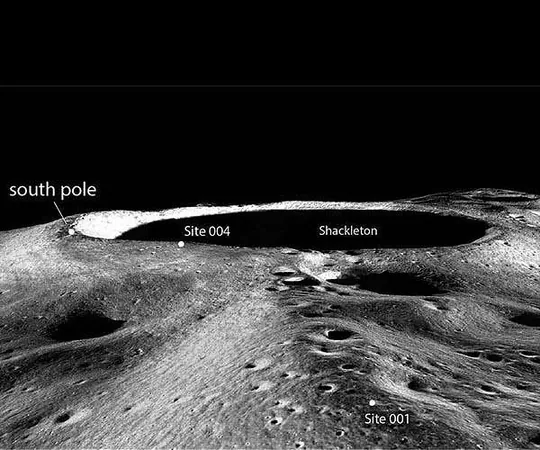
Untangling the Visual Challenges Facing Astronauts at the Lunar South Pole: What NASA Must Overcome for Success
2024-12-27
Author: Mei
Introduction
NASA is gearing up for a monumental return to the Moon through its ambitious Artemis program, with a primary focus on establishing a sustainable human presence at the Lunar South Pole (LSP). This area has been strategically chosen due to its exceptional advantages, including constant communication with Earth, extended solar exposure, and proximity to vital resources such as water ice. However, the lunar environment at the South Pole presents daunting visual challenges that must be tackled for the missions to succeed.
Unique Lighting Conditions
One of the biggest hurdles lies in the unique lighting conditions at the LSP. Unlike previous lunar missions, astronauts will encounter a peculiar situation where the Sun hovers low on the horizon, peaking at only 7 degrees. This constant low-angle sunlight creates stark contrasts, leading to areas of intense brightness alongside deep, impenetrable shadows. Though human vision is notably adaptive, these extreme lighting conditions can hinder astronauts’ capability to navigate safely and perform essential tasks. NASA regards this challenge as a monumental engineering hurdle that requires immediate attention.
Holistic Approach to Functional Vision
In past missions, such as Apollo, astronauts managed light exposure through careful positioning and custom helmet designs. Now, the Artemis missions are set to implement a more holistic approach that integrates functional vision considerations into all levels of design. The complex interplay of direct sunlight, extensive shadows, and the need for artificial lighting necessitates the creation of innovative systems that allow astronauts to adjust to fluctuating light conditions. Protecting their eyesight while maintaining operational efficiency has become a priority.
Addressing Visual Performance Needs
A recent NASA evaluation has revealed deficiencies in current standards for functional vision. While spacesuit designs have made strides in mobility, they fall short in addressing the crucial visual challenges presented by the transition from brightly lit areas to darkness on the lunar surface. It is imperative that NASA integrates visual performance needs into every aspect of their designs—from helmets and visors to advanced lighting systems. This approach is essential not only for safe pedestrian movement, but also for the operation of tools and management of equipment in challenging visual environments.
Need for Cutting-Edge Simulation Techniques
Moreover, the assessment identified the critical need for cutting-edge simulation techniques. Both physical and virtual simulation models must reflect authentic lunar conditions to test helmet shields, artificial lighting systems, and visual aids effectively. These simulations should aim to recreate the blinding effects of sunlight and assess astronauts’ adaptation times when moving from light to shadow. Terrain-based simulations will be key to recognizing the inherent risks of movement and equipment use in these conditions. By harnessing various organizational expertise and facilities, NASA aspires to validate advanced technical solutions and substantially enhance astronaut training.
Conclusion
As the Artemis program progresses toward its target launch, addressing these visual challenges will be fundamental to ensuring the safety and effectiveness of astronauts. Will NASA overcome these hurdles to fulfill its historic return to our closest celestial neighbor? Only time will tell, but one thing is certain: the success of lunar missions hinges on mastering the art of visibility. Stay tuned for the next thrilling chapter in space exploration!


 Brasil (PT)
Brasil (PT)
 Canada (EN)
Canada (EN)
 Chile (ES)
Chile (ES)
 Česko (CS)
Česko (CS)
 대한민국 (KO)
대한민국 (KO)
 España (ES)
España (ES)
 France (FR)
France (FR)
 Hong Kong (EN)
Hong Kong (EN)
 Italia (IT)
Italia (IT)
 日本 (JA)
日本 (JA)
 Magyarország (HU)
Magyarország (HU)
 Norge (NO)
Norge (NO)
 Polska (PL)
Polska (PL)
 Schweiz (DE)
Schweiz (DE)
 Singapore (EN)
Singapore (EN)
 Sverige (SV)
Sverige (SV)
 Suomi (FI)
Suomi (FI)
 Türkiye (TR)
Türkiye (TR)
 الإمارات العربية المتحدة (AR)
الإمارات العربية المتحدة (AR)